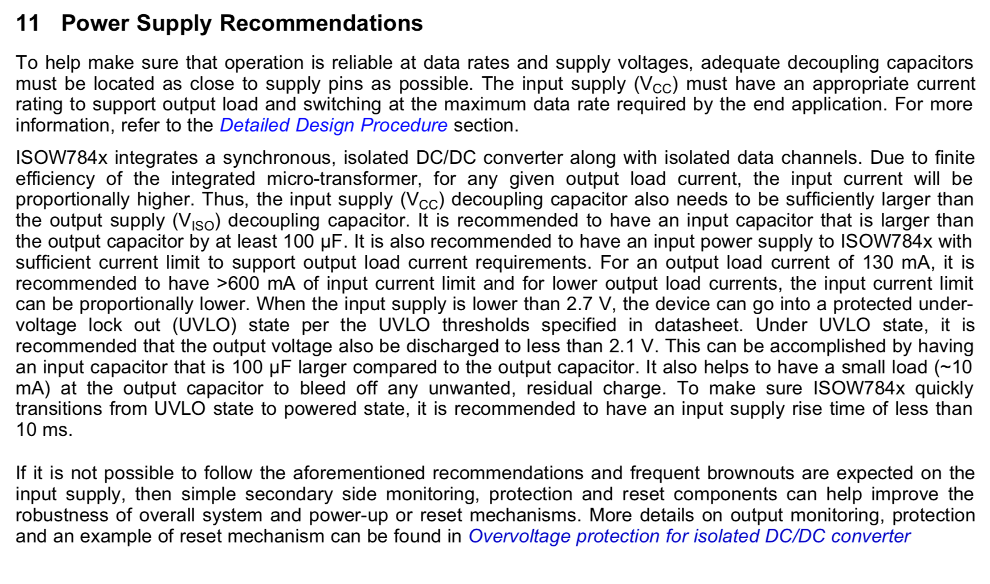Other Parts Discussed in Thread: ISOW7741, ISOW1432
Like in these posts:
I have the issue that multiple ISOW7841 (DWE) keep going low resistance on the power output. The power draw goes up, the voltage down.
I can not find any reason for this damage/behaviour.
I am unable to find the passage about rise time on the primary side in the current datasheet. As in the other post my application has low current demand. Actually the IC that breaks the most often is the one with the least demand on it. It just make no sense. Sure the IC doesn't need a minimum load?
The output capacitance is 47uF+100nF+100nF. The load is a TI THVD1450D in receive mode. DE is low.
I will supply any details in written form or draw sketches.
[defect broken]




